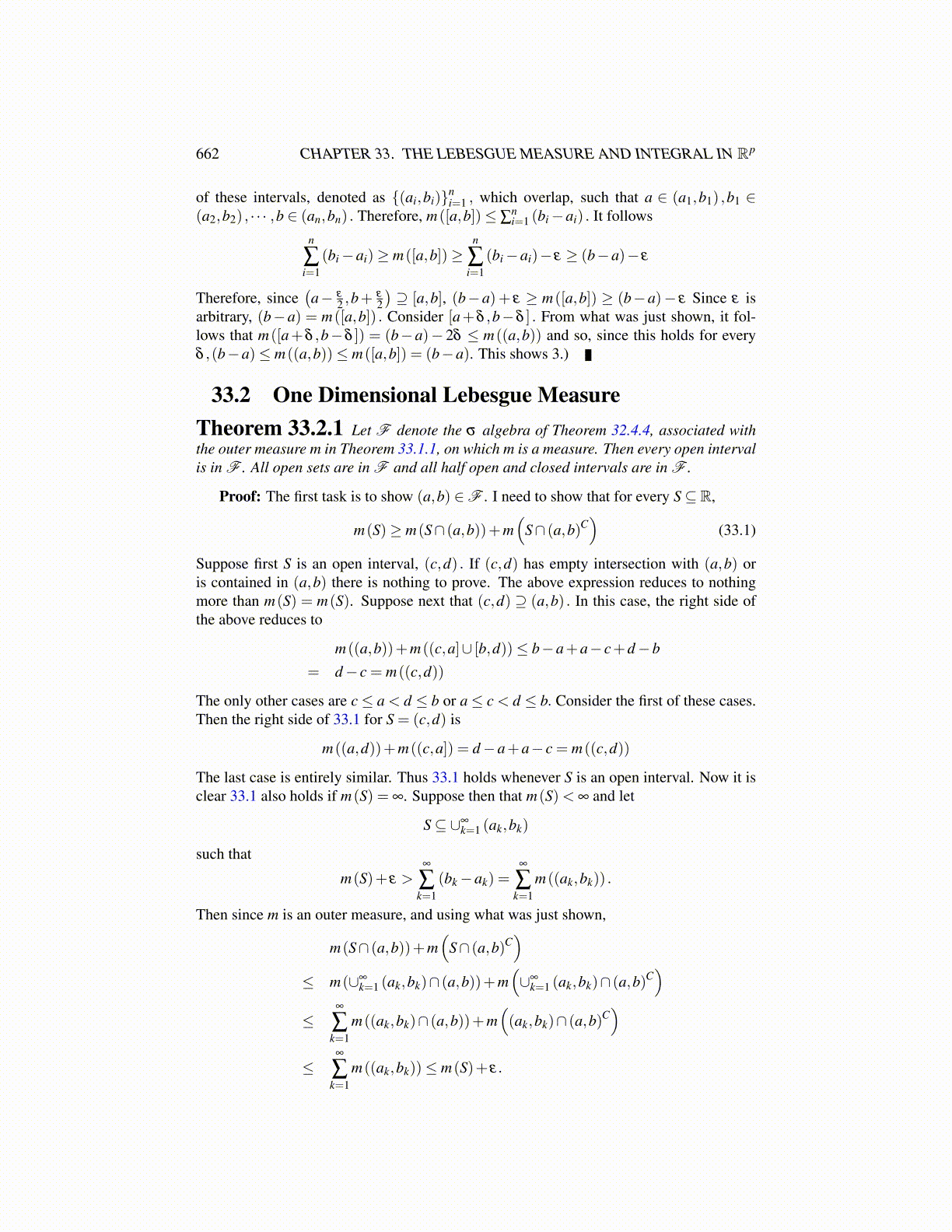
662 CHAPTER 33. THE LEBESGUE MEASURE AND INTEGRAL IN Rp
(x1 · · · xr · · · xs · · · xp
)T
→(
x1 · · · xr · · · xs + xr · · · xp)T
where these are the actions obtained by multiplication by elementary matrices. Denotethese special linear transformations by E (r ↔ s) ,E (cr) ,E (s → s+ r) .
Let R = ∏pi=1 (ai,bi) . Then it is easily seen that
mp (E (r ↔ s)(R)) = mp (R) = |det(E (r ↔ s))|mp (R)
mp (E (cr)(R)) = |c|mp (R) = |det(E (cr))|mp (R)
The other linear transformation which represents a sheer is a little harder. However,
mp (E (s → s+ r)(R)) =∫
E(s→s+r)(R)dmp
=∫R· · ·∫R
∫R
∫R
XE(s→s+r)(R)dxsdxrdxp1 · · ·dxpp−2
Now recall Theorem 33.3.2 which says you can integrate using the usual Riemannintegral when the function involved is continuous. Thus the above becomes∫ bpp−2
app−2
· · ·∫ bp1
ap1
∫ br
ar
∫ bs+xr
as+xr
dxsdxrdxp1 · · ·dxpp−2
= mp (R) = |det(E (s → s+ r))|mp (R)
Recall that when a row (column) is added to another row (column), the determinant of theresulting matrix is unchanged.
Lemma 33.5.3 Let L be any of the above elementary linear transformations. Then
mp (L(F)) = |det(L)|mp (F)
for any Borel set F. Also L(F) is Borel if F is Borel.
Proof: Let Rk = ∏pi=1 (−k,k) . Let G be those Borel sets F such that
mp (L(F ∩Rk)) = |det(L)|mp (F ∩Rk) (33.5)
Letting K be the open boxes, it follows from the above discussion that the pi system Kis in G . It is also obvious that if Fi ∈ G the Fi being disjoint, then
mp (L(∪∞i=1Fi ∩Rk)) =
∞
∑i=1
mp (L(Fi ∩Rk)) = |det(L)|∞
∑i=1
mp (Fi ∩Rk)
= |det(L)|mp (∪∞i=1Fi ∩Rk)
Thus G is closed with respect to countable disjoint unions. If F ∈ G then
mp(L(FC ∩Rk
))+mp (L(F ∩Rk)) = mp (L(Rk))
mp(L(FC ∩Rk
))+ |det(L)|mp (F ∩Rk) = |det(L)|mp (Rk)
mp(L(FC ∩Rk
))= |det(L)|mp (Rk)−|det(L)|mp (F ∩Rk)
= |det(L)|mp(FC ∩Rk
)It follows that G is closed with respect to complements also. Therefore, G = σ (K ) =B (Rp). Now let k → ∞ in 33.5 to obtain the desired conclusion.